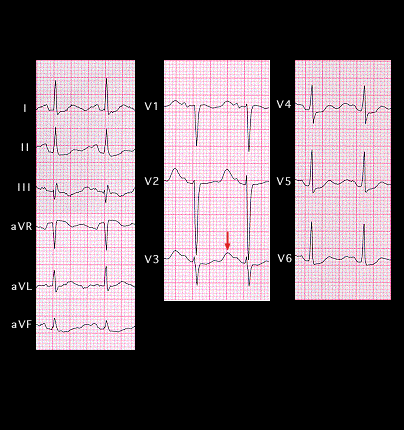
This ECG is from the same patient and was recorded when the serum potassium was 2.2.mM. There is now a loss of T wave amplitude and an even more pronounced U wave (arrow) whose amplitude now exceeds that of the T wave in leads V1-V5. There is also depression of the ST segment in leads V4, V5 and V6. The P wave, PR interval, and QRS complex remain normal.
